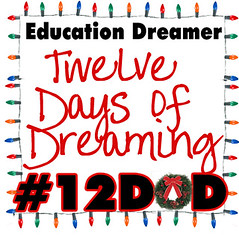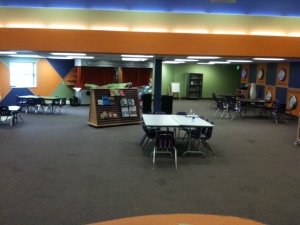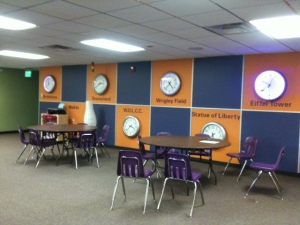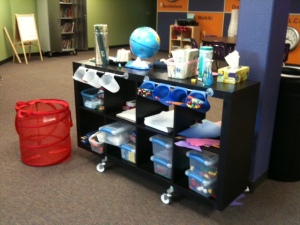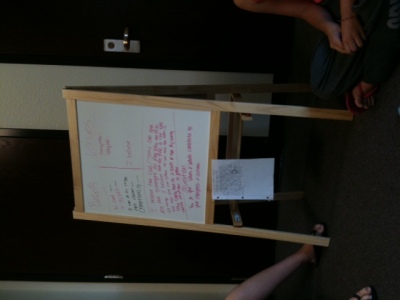We choose the moon: assessment without labels
“With willing hearts and skillful hands, the difficult we do at once; the impossible takes a bit longer.”- unknown
Yesterday, @Kevreadenn shared the quote above with me on Twitter. It had me thinking about assessment and John F. Kennedy’s, “we choose the moon” (embedded above – you should watch it again). The declaration that we WOULD send a man to the moon, that we would do the impossible, seemed like an unworkable task given the technology of 1969. It is astounding to me that the technology I hold in my pocket is significantly more capable than the technology that sent a man to the moon. Kennedy inspired a nation to dream together, to achieve the impossible using the resources that were available. How can we inspire kids in this way as they quest for learning? How can we help those students who look at the goal of reaching the moon and think, “this is impossible, I only have 1969 technology,” to be inspired, to look at their resources in new ways and believe that they can do the impossible?
Everyone wants to know that they are “winning” and contributing to something meaningful. The declaration that a man would go to the moon was a lofty goal. It seemed incredibly important, as a nation, that we achieve this goal together.
It strikes me as strange that the majority of assessment that we focus on in education only shows lag data. The lag data reveals to us where a student landed in a given moment, but doesn’t offer any opportunity for course correction. It also doesn’t take into account outside influences (not enough sleep, home struggles, lack of nutrition, friendship stresses, etc.). If our goals are lofty, and we want learning to be better, we will stop focusing on the lag data as the most important, and instead focus on the lead data. Lead data shows us what leads up to the learning, it gives us insight in the journey and process so that we can adjust as we go.
The majority of grading systems fail to compel action from students because they show historical data only. Students are left believing, “I’ve failed, and now I have to move on knowing I already fall short. Now I have to continue forward from a deficit.” Or they may be left believing, “I aced this, I already know it all, I don’t have anything more to learn.” Traditional grades tend to end learning. Traditional grades also measure students against everyone else with the goal being a perfect score. (Notice that I did NOT say that the goal was learning.) This comparison can be demoralizing for students who know they will fall short of the perfect score. They begin to label themselves as “stupid” and often arrive at the apathetic stance of, “it’s not even worth trying.” The other scenario is the student that believes the goal of the perfect score signals that they learned everything they need to know. For these students, apathy comes in already having hit the mark. “I know everything I need to about x.” This line of thinking closes down creativity and the drive to learn more. Apathy is the killer of learning. It matters not if you are a straight A student, or a D student, traditional grade systems breed apathy and don’t encourage kids to go for the lofty goals. There will be no choosing the moon.
Grading systems need to be upgraded so that they engage students in the process of reaching lofty goals. When students are able to help set their own goals and the assessment happens as a part of learning, students are continually pulled forward in their learning. Each small win adds learning momentum that begins to snowball into something bigger. For those who struggle, the small victories reveal that they can win and they are making forward progress. This gives the confidence that all learning is possible and worth engaging (even when the end goal feels impossible). The students who find that learning comes easily aren’t halted by artificial ceilings. They aren’t left believing that the learning has ended and are encouraged to keep moving forward.
In starting Anastasis Academy, we quickly found that no traditional grading system could adequately assess students as they were learning. We ditched formal A-F grading and instead used standards based grading. The idea was that if we assessed students based on standards (which we used as some of our learning goals), stakeholders would be able to better map progress as they went. We use standards differently, at Anastasis the standards aren’t organized by grade levels, they are simply a continuum of foundational skills. It didn’t take long before the standards based grading was also falling short. There is SO much more to learning than simply meeting the standard. We were interested in helping students understand how their attitudes toward learning impacted academic progress. We wanted to help them understand how character spills into everything else that they do. We wanted them to see that more important than a “Math” grade, was the ability to think like a mathematician. We wanted students to be able to “choose to go to the moon” and contribute to something meaningful. We needed something more holistic that helped students see the intricacies of how learning works. We wanted them to be able to make correlations between their attitudes toward learning and the outcomes that they could see.
This is the “report card” that I created. It is our attempt to help kids better understand what contributes to learning. It is a helpful way to show students that they aren’t “stupid in math,” but instead help them realize that they aren’t risk takers in math. The aversion to risk taking in math is what really holds them back.
The Latin root of Assessment is assidere, which means “to sit beside.” At Anastasis, we believe that assessment is more than just a measurement, it is an opportunity for apprenticeship, a time for us “to sit beside” and guide. We’ve used various tools for assessment in our short history, our search was for the assessment tool that would offer a more holistic picture of learning. We’ve used Mastery Connect and Jump Rope, but they fell short in giving us that holistic picture because they were tied to Common Core Standards alone (and limited by grade levels). What our students do at Anastasis every day is SO much bigger and deeper than these standards, and yet we didn’t have a good way to demonstrate that. Beginning in January, we rolled out our own grading system. We call it UpGrade because that is what it felt like, an upgrade!
Our goal for feedback on the UpGrade report is twofold:
1. To give students feedback that causes them to think, engage, and reflect on their own learning process as they learn.
2. To give families a detailed account of the student’s learning journey and forward progress.
The UpGrade reports are designed to explain what students know and are able to do, rather than determining grades based on point averages. This kind of grading allows teachers to more effectively tailor instruction to students based on what they actually know and can do, no floors and no ceilings.
The UpGrade report contains the proficiency marks 1-5 (explained below). These numbers are intended to demonstrate the process of learning, students move through the levels of proficiency as learning progresses. A “1” indicates that a child is new to the learning or requires a lot of guidance. A “5” indicates that the student is able to apply the learning to new situations and make connections to other learning.
| 1- Novice | Concept and/or skill is brand new, student is just getting started in the learning. Student requires much teacher guidance and prompting. |
| 2- Apprentice | Some prompting or guidance is needed for the new concept and/or skill. |
| 3- Practitioner | Concept and/or skill can be done consistently and independently. Student may require occasional prompting or guidance. |
| 4- Scholar | Student can apply concept and/or skill to new and/or different situations with little guidance. Student is ready to build on the learning (next level of standard). |
| 5- Change Maker | Concept and/or skill come second nature and can be used to make connections with other learning. Students understand concept/skill and can apply, evaluate, analyze, and create using the skill/concept. Student can use skill/concept for in-depth inferences and applications. |
Of course when you create a report card that looks like this, you also have to craft a grading system to populate the report card. Dang it.
This is where I had to get creative and use my limited resources to make something (that seems impossible) work. I used Apple’s Numbers as the method for creating the grading system. It is tedious work, the user interface is messy, but it allows lofty goals and the impossible.
On the back end, teachers can fill in rubrics, or learning evidence pages. These compile and end up as the final 1-5 on the image that you see above. Why did I use Numbers? It is the only spreadsheet program robust enough to incorporate the graphic above. The evidences of learning (assignments) and scores are the easy part. Getting the rubrics to work the way I wanted them to, not so much! I sent out a call for help the other night on Twitter and had some AMAZING spreadsheet ninjas step in to help me find solutions. I promised to share what I figured out…for those not interested in the technical bits, feel free to skip ahead. 🙂
This is the rubric that I was working on. I wanted it to “self grade” and then for the score to transfer as a learning evidence. It seemed like it should be simple, but this honestly stumped me for days. Thankfully my PLN stepped in to point me in the right direction!
I started out by creating a highlighting rule. This is simple in Numbers, just click on the cell(s) that you want the rule on and in the “cell formatting” pane, choose “Conditional Highlighting.” In each cell where teachers could leave a score, I wanted the cell to highlight when the score was added. I chose to add the rule “Text contains” and then the number that corresponded to the row of the rubric. Then I chose a color to highlight.
Next came the tricky part. In the cells full of text, I wanted the last cell to recognize when a teacher had typed in a number, and to add up all the numbers of the row so that we could get a total that would populate on the Learning Evidence sheet. I could find all kinds of ways to accomplish this in a Google Spreadsheet or in Excel, but none of the solutions seemed to work in Numbers. I kept getting a syntax error. I finally solved it by using the following format: =COUNTIF(B2:H2,”=*1″) In each row, I changed the number to reflect the score that it would count. This got me most of the way to what I needed, but it was only giving me a count of how many of the number were in the row, not giving me the sum (=SUMIF didn’t work). SO, I added another column to find the product of the “Countif” with the row number. Success! I’ll hide these two columns for the final grade system and just have the total at the bottom show up. This total is easy to then transfer to the Learning Evidence sheet.
THANK YOU @mathlioness @katieregan88 @mrmatera @alicekeeler @royanlee @jasonschmidt123 @benlouey @malynmawby @thomascmurray, you all are truly wonderful for spending time to help me solve this. I am seriously elated that there was a solution! Anastasis teachers will be thrilled as well! 🙂 YOU ARE NINJAS!!
When people ask about Anastasis, they are usually curious to know how we’ve broken past the barrier of labels. We have students who are dyslexic, twice exceptional, have struggled in school, are gifted, know how to play the game of school, etc. Everyone of these kids chooses the moon. They choose to do the impossible and keep moving forward. They aren’t stifled by the learning labels. They know they are more than an “A” or “F.” They start to understand that learning is not the same as a grade. They begin to understand where their hangups actually are and can work on adjusting those instead of believing they are failures. It is amazing what happens when you take away the labels and help kids understand that no matter where they start from, there is something to be learned, forward progress to be made. They choose lofty goals. They do the impossible.





